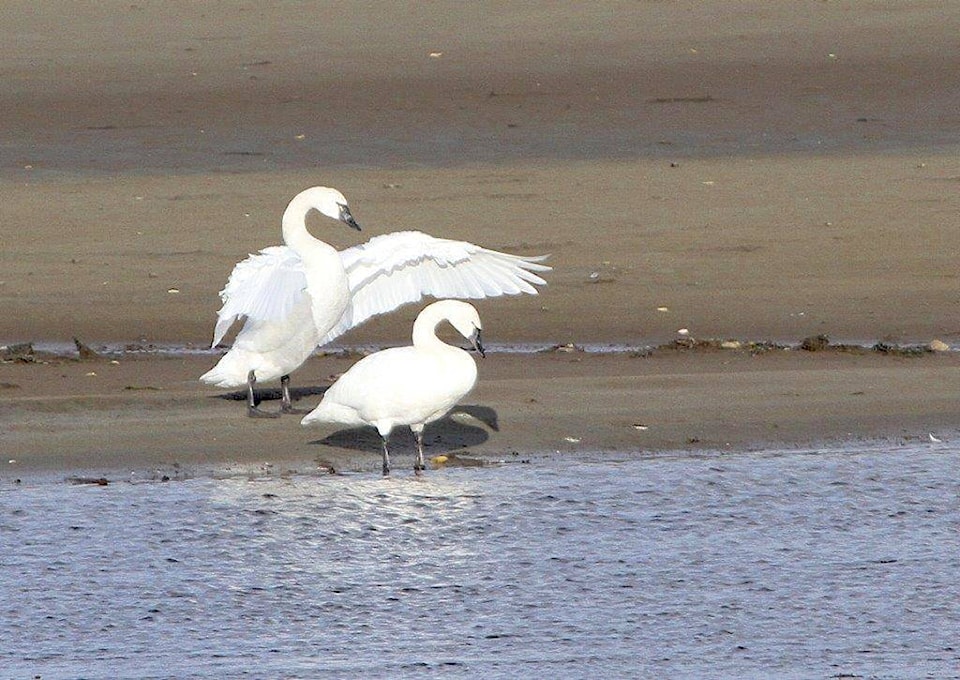By Margo Hearne
Today the water is glassy. Ducks drift with the current and the sky is clear. The chill of the past week is breaking down and tonight’s bright moon will fade in the coming days. The harsh kak, kak of the Peregrine Falcon woke us this morning and out over the dunes in the later morning a goshawk caught the updraft where sea and land meet.
We learn something new every day. Who knew that the bitter wind would bring flocks of gorgeous White-winged Crossbills lilting over us? They have a gentler call than the more common Red Crossbill and have a pastel, pinkish shade, not as dominant as the Red’s deep red. In flight, their white wing-bars flash in the sun. They were an unexpected gift as the nights draw down and fall fades into winter. Interestingly, they were flying east against the wind toward the mainland. Perhaps they had been blown across Hecate Strait in the strong northeasters and were making their way back.
White-winged Crossbills don’t nest on island and, according to Audubon, they are “nomads of the spruce woods… they wander throughout the boreal zones of the northern hemisphere, often in large flocks. Their peculiar crossed bills are perfectly adapted for prying open spruce cones to get the seeds; flocks will travel long distances, perhaps clear across Canada at times, in search of good spruce cone crops. When they find such crops, they may settle briefly to build nests and raise young, regardless of the season, even in mid-winter.”
There doesn’t seem to be a good cone crop here this year. In fact, when we checked the low spruce trees over which they had flown, we could only see last year’s brown cones. The birds will probably keep moving until they find a place to settle for a while.
The wind brought in a few other visitors this week. Out of nowhere a White-throated Sparrow appeared, the first we’ve seen this year, and on top of the Cotoneaster bush sat a Purple Finch, also the first of the year. They came in for a quick feed, but the pesky Steller’s Jays scared them off and they haven’t been seen since. We do like the jays, but it would be nice if they left a few seeds for the other birds and didn’t load up with everything to hide elsewhere.
Green-winged Teal and Mallard waited along the edge of the channel in Delkatla this week. They were hunkered down in the relative shelter of the grass verge as the grim wind roughened the water in the basin. As they waited, two Tundra Swans landed beside them. They were such a contrast to the small dark ducks that one wondered if they were clumps of white ice. Then they moved and the illusion vanished. Long, delicate necks, large wings, and the tell-tale yellow spot between the bill and the eye showed them to be Tundras. There have been two swans around most of late summer and fall. Perhaps they are the same ones, although our neighbour mentioned that a flock of swans landed in a southeaster in Delkatla last weekend. They hadn’t stayed for long; they were simply waiting out the weather. It’s what the sanctuary is for really: a place to rest on the wonderful journey through life. What a dismal world it would be without the colour and drama of the wild world.
